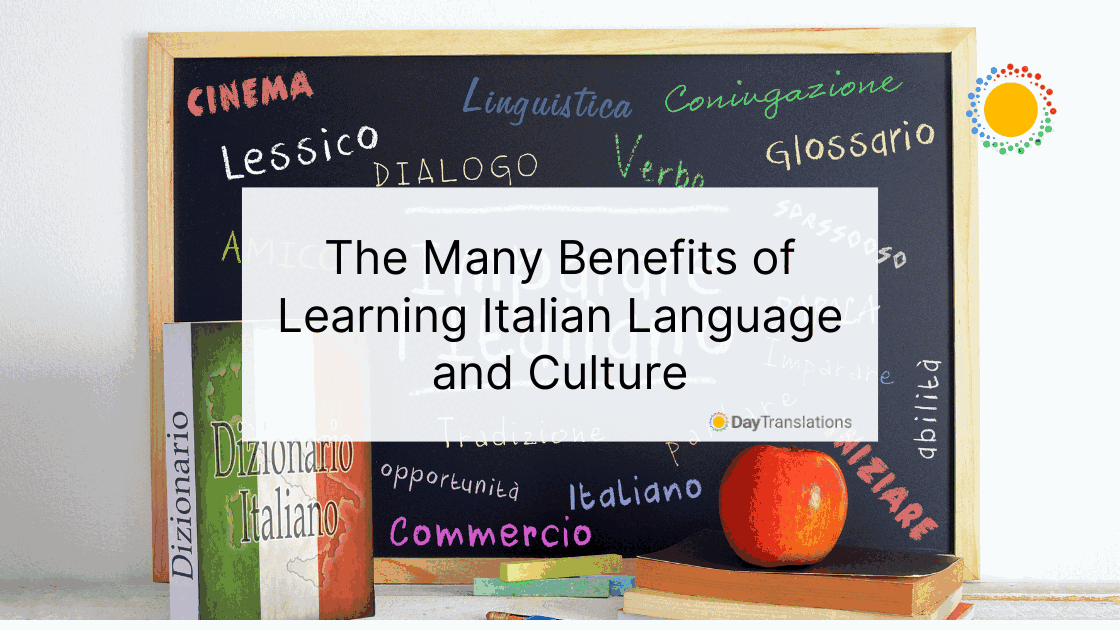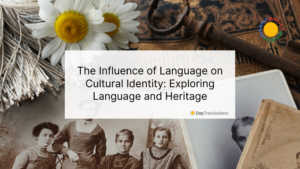Italy is a consistent trade partner of the United States and thousands of companies in the U.S. do business with Italy. Major American companies have offices in the country and Italian firms likewise have offices in the United States, particularly in the metropolitan area of Detroit. In 2017, U.S. exports to Italy reached about $18 billion while imports amounted to about $50 billion, according to foreign trade data for Italy available on the U.S. Census Bureau website.
If you are a job seeker, you’re sure to see the employment opportunities if you speak Italian. But how about those who are just about to learn the language? How will they benefit from learning Italian language and culture?
Beyond pasta and pizza
Many people love Italian food, with pasta and pizza topping the list of the most recognizable and well-loved among the wide range of Italian dishes. Beyond Italian cuisine, which is something that you cannot get tired of, there are many benefits available for different careers. You might be interested to know that Italy is known for transportation equipment, machinery for construction, space engineering, ship building, electromechanical machinery, robotics, manufacture of machine tools, furniture design, graphic design, interior design and of course, culinary arts.
Italian is spoken in 14 countries, with 64.8 million speaking it as their mother tongue. In Europe, the number of first language speakers of Italian is 59 million. Users of Italian in all countries has reached 67.8 million.
Day of Unification
While Irish-Americans were busy celebrating St. Patrick’s Day on March 17, very few people, except the Italian-Americans knew that it was also Italy’s Unity Day. Former President Barack Obama issued a proclamation on March 17, 2011, marking the day to honor the 150th year of the Unification of Italy.
Former Presidnt Obama said that it was also a day to honor the men and women of Italian heritage who enrich and strengthen the United States, the history of Italy and joint efforts of Italy and the U.S. to promote democracy and freedom worldwide.
Learning Italian language and culture
Why should you study Italian language and culture? There are so many reasons, especially if you are in in business, technology and the arts. For students, you can take art history if that is your inclination, international relations, music, education and linguistics.
- Most of the English vocabulary came from Latin directly and Italian is one of the languages that came from Latin. Learning Italian can help you understand the English language better. One letter has only one sound, so it is easier to learn.
- Italy’s tourism industry is booming and the country is one of the most favored European destination.
- Studying in Italy costs lower, especially if you are looking to be a veterinarian, dentist or physician. It you are into arts, you’ll need to learn Italian if you want to be an art historian. UNESCO said that more than half of the art treasures in the world are in Italy.
- Learning Italian would help you to have an easier time learning the other Romance languages such as Spanish, Portuguese and French. The vocabulary of the Italian language is closest to the French vocabulary, while its verb tenses are closer to the English verb tenses.
- If you are a fan of Italian cuisine, learning Italian means understanding the country’s food, which is highly regarded in the world. You do not have to wonder about the entries in an Italian restaurant menu anymore because you speak the language.
- The job outlook for interpreters and translators in the United States is rosy. It is expected that the demand will continue rising, particularly for translators and interpreters in Italian, Spanish, French and Portuguese. The language services industry is projected to remain robust until 2026.
Just to impress on you that the translation and interpreting industry is very healthy: in 2013, the U.S. Census Bureau reported only 39 foreign languages spoken in the country but today, about 350 foreign languages are spoken at home. There will always be a demand for Italian translators and interpreters where culture and language meet, such as in schools, law enforcement, legal settings and healthcare institutions.
In many ”most” lists, Italian follows French in the most beautiful spoken languages in the world. It is considered as one of the best sounding and one of the most romantic.
Understanding Italian culture
Learning the Italian language is learning its culture as well. Italy is home to about 62 million people in 2017. Italian culture is immersed in food, music, architecture, family and the arts. It is the center of the Roman Empire and the Renaissance.
It is bordered by Slovenia, Austria, Switzerland and France. Italy’s neighbors influenced its culture, as well as the cultures of Sardinia and Sicily.
About 93% of the population of Italy speaks Italian as their primary language although native Italians also speak Walser, Slovenian, Greek, German, French, Croatian, Corsican, Cimbrian, Catalan, Bavarian and Albanian. Some of the dialects spoken around Italy include Milanese, Calabrian, Venetian, Piedmontese, Ligurian, Sicilian, Neapolitan, Friulian and Sardinian.
Italians place high value in the family and you can see Italians in the United States having extended families. They enjoy family gatherings and celebrate many holidays together. Another thing that unifies Italians is their religion – Roman Catholicism, which is the religion of 80% of Italy’s population.
In terms of art and architecture, Italy introduced several architectural styles, such as Neoclassical, Baroque, Renaissance and Roman. It has some famous iconic structures like the Leaning Tower of Pisa and the Colosseum. Touring Italy will bring you close to several castles, such as Ussel Castle, Verrès Castle and the Valle d’Aosta Fort Bard.
Rome, Venice and Florence have plenty of museums and some of the world famous art collections can also be seen in public buildings and churches such as the Sistine Chapel. Some of the world-famous operas were born in Italy, including ”La Traviata” and ”Aida.” It is also home to several fashion houses such as Prada, Versace, Benetton, Gucci and Armani.
For the Italians, food is life and indeed, the country introduced to the world various pasta dishes, cheeses and wines, and different ways to use fresh ingredients, including a variety of herbs and spices in their sauces and main dishes.
Interesting facts about Italy you might not know
- Italy has 14 volcanoes. The most active are Vesuvius, Stromboli and Etna.
- Italian inventors gave the world the typewriter, espresso machine, ice cream, cologne, piano and thermometer.
- Some of the most famous and well-loved artists in the world, such as Leonardo da Vinci, Raphael, Michelangelo, Titian and Caravaggio are Italian.
- Ricotta, provolone, mozzarella, gorgonzola and parmesan are Italian cheeses.
- Italy is the world’s largest wine producer.
- Pizza, which was invented in the 1860s in Naples, is a term that is understood all over the world.
This one is a curiosity. In the 17th century, a writer by the name of Francesco Moneti, wrote Cortona Convetita. He wrote precipitevolissimevolmente which is a superlative adverb that means, ”very quickly.” This word did not follow the standard grammar when adding the superlative adverb – ”mente.” It should have been precipitevolissimamente.
It did earn the distinction of being one of the longest words in the Italian vocabulary, which also includes such words as esofagodermatodigiunoplastica, which is a type of digestive surgery and psiconeuroendocrinoimmunologia, which refers to the study of the functions of the endocrine, immune and nervous systems.
History of the language
Italian is one of the Romance languages and belongs to the Indo European language family. It is a single language, although it has several dialects. Italian is a direct descendant of Latin,
During the evolution of the Italian language, several dialects were used, which made it difficult to identify which is pure Italian as the native speakers of each dialect claimed that what they speak is the pure one. Even the documents that were created in the 10th century were written is the author’s own dialect.
In the 14th century the dominant dialect was Tuscan because of the prominence of Florence, the most important city in Tuscany. Three literary artists emerged from the Florentine period: Dante Alighieri, the author of the ”Divine Comedy,” Francesco Petrarca (Petrarch), who became famous for his translations of writings from Latin into Vulgate, his philological works and works in Latin especially the “Canzoniere.” The other Florentine literary artist was Giovanni Boccaccio, a disciple and friend of Petrarch, author of the ”Decameron” and “On Famous Women.”
The grammarians of the 15th and 16th centuries attempted to establish norms for the language and give Tuscan the status of classical and central Italian speech through its vocabulary, syntax and pronunciation. However, it was only during the 19th century that the Tuscan language spread outside of Tuscany and became Italy’s main language. The shift affected the country’s cultural, economic, social and political transformation.
Aside from the employment opportunities in the translation and interpreting field, learning Italian allows you to pursue a variety of careers in different fields, from arts administration to web design.
As important as Italian is to the future of artists, white-collar workers and entrepreneurs, is the accuracy of Italian translation of documents to be submitted to Italian businesses, schools and universities, and government departments. Ensure that you get the most accurate Italian translation possible by getting in touch with Day Translations, Inc. Day Translations has Italian translators located worldwide who are native speakers. It is easy to connect with our company. You can request a quote for your translation needs through email at contact@daytranslations.com or by calling 1-800-969-6853. We are open 24 hours a day, 7 days a week throughout the year, to provide you with the right kind of language service whenever you need it, wherever you are.














Sorry, the comment form is closed at this time.